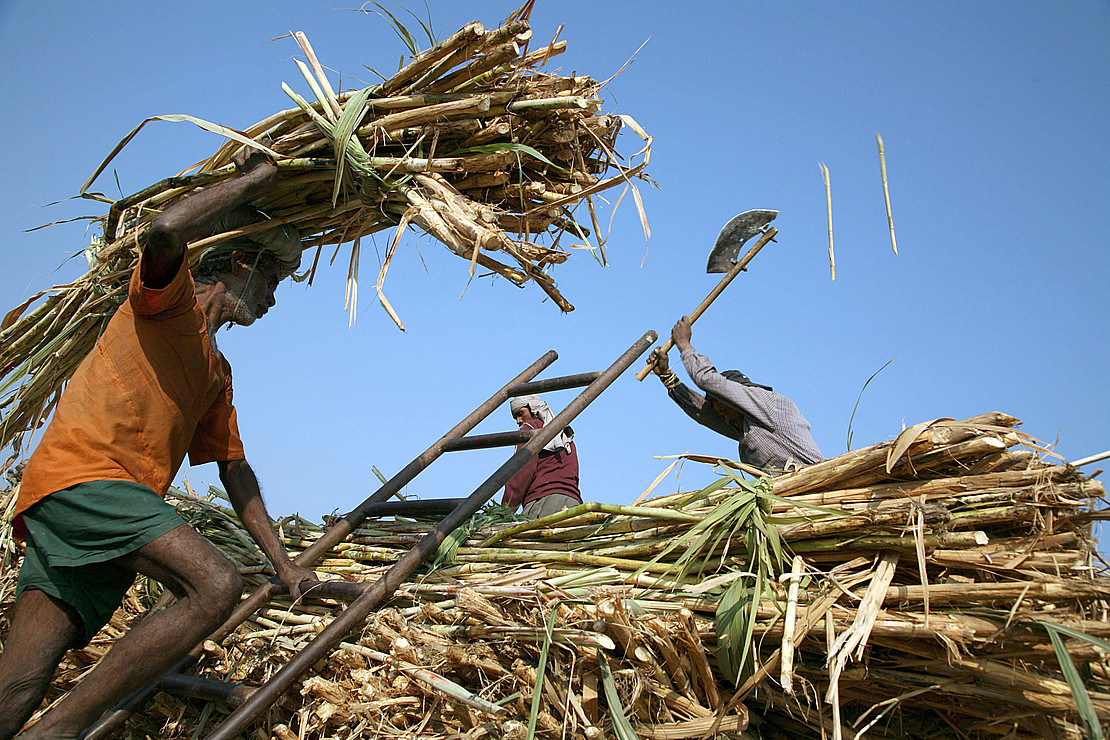This page contains automatically translated content.
The world in chains
 Image: Pete Pattison (picture alliance)
Image: Pete Pattison (picture alliance)They determine our everyday lives and yet we often know little about them: supply chains are a commonphenomenon. On the one hand, they are a symbol of rampant globalization, and on the other, they are a beacon of hope for sustainable development.
Prof. Dr. Stefan Seuring has been working on the subject of supply chains for many years. For him, understanding supply chains is an important key to understanding global developments. "The Corona crisis in particular showed that globalized supply chains can pose a major risk," explains Seuring. Due to the close international ties between many industrial companies, the entire production process can come to a standstill if the gears jam at one point.
But that's not the only problem with supply chains.Prof. Dr. Stefan Gold, who, like Seuring, works at the Institute of Business Administration at the University of Kassel, is dealing with an issue that many companies ignore and that also has to do with supply chains - modern slavery. "Modern slaves don't usually walk around in ketten like the slaves in historical illustrations - but nonetheless, there are still working conditions in an alarming number of areas around the world today that can only be described with the term 'slavery,'" Gold summarizes.
Especially at the beginning of many supply chains, for example in rawmaterial production, people are still employed today under conditions that resemble those of former slaves. "But there are also examplesle in Germany and other industrialized countries," says Gold, citing agriculture and construction as sectors frequently affected. "So in the U.K. right now there's a big effort in politics and, for example, in the umbrella organizations of the construction industry to end modern slavery."
Landscapes as part of the chain
Chains can also have positive effects, however, for example in the form of value chains - Prof. Dr. Tobias Plieninger, for example, is looking at ways of assigning landscapes a place in the value chain. "Changesin agricultural landscapes - even if they take place at the local level - are increasingly driven by globally networked economies and markets. The complexities of these connections between far-flung places, so-called telecouplings, pose dangers, but also chances for sustainability," Plieninger explains. So, with support from the DFG, he has launched a project aimed at identifying leverage points in landscape product value chains that support a transition to sustainable landscape management. "These can be certifications, for example, that help consumers make sure their behavior doesn't lead to further landscape degradation."
This year, Plieninger was named a Highly Cited Researcher for the second year in a row for his work in sustainability science. The Highly Cited Researchers list is published annually by the U.S. company Clarivate Analytics (formerly Thomson Reuters).Highly cited publications are those that are among the top 1% most cited in their field in the ten years following publication.Only those scientists who are involved in several such Highly Cited Papers are included in the circle of "Highly Cited Researchers".
In addition to Plieninger, Stefan Seuring was again included in the circle of Highly Cited Researchers - for Seuring, this is the third placement in a row. "This shows how much the work on sustainable supply chains is also noticed in the international scientific community," says Seuring, adding, "From my point of view, this is a glimmer of hope that the discussion is moving in the rightdirection!"
TEXT Markus Zens